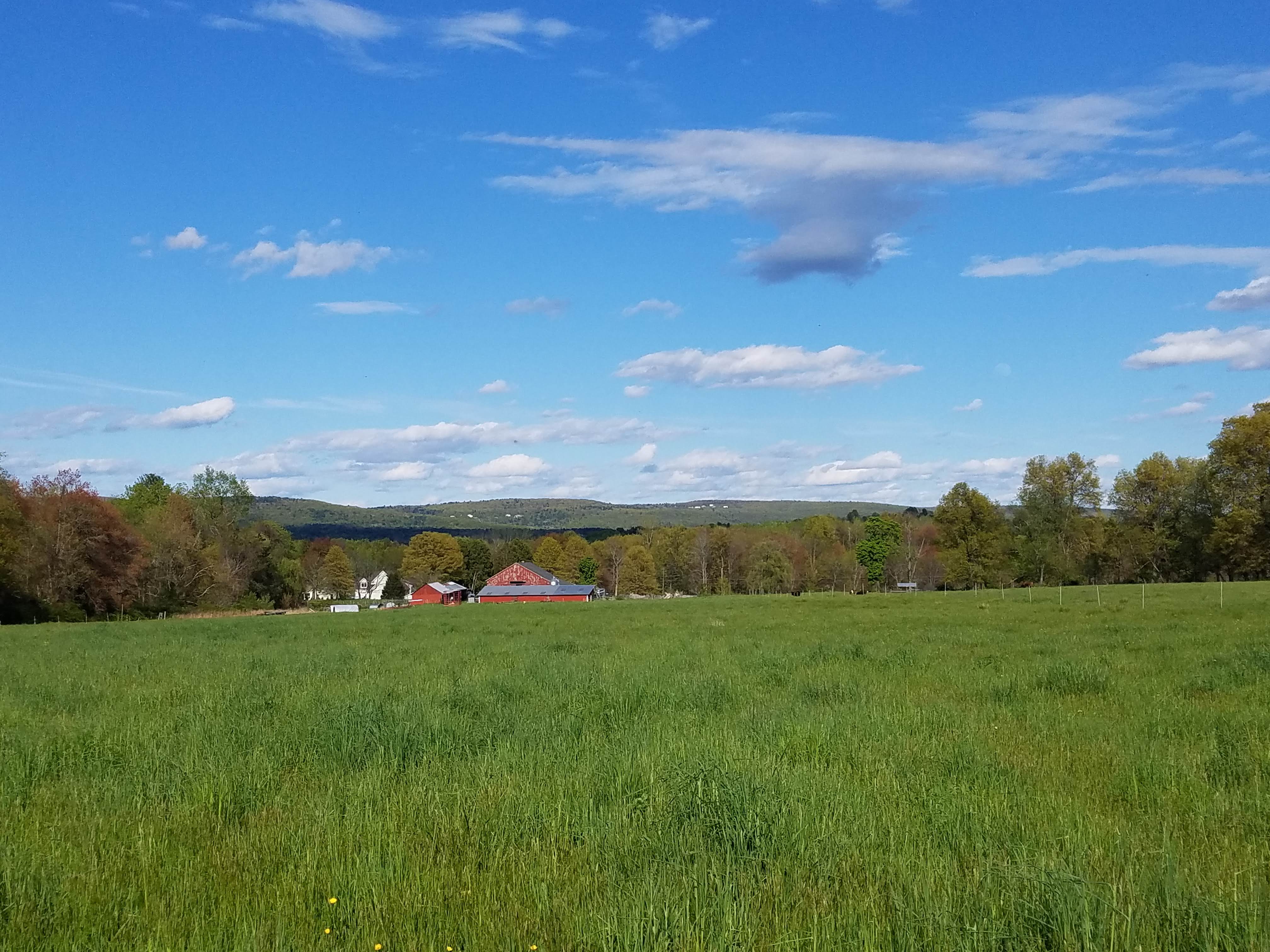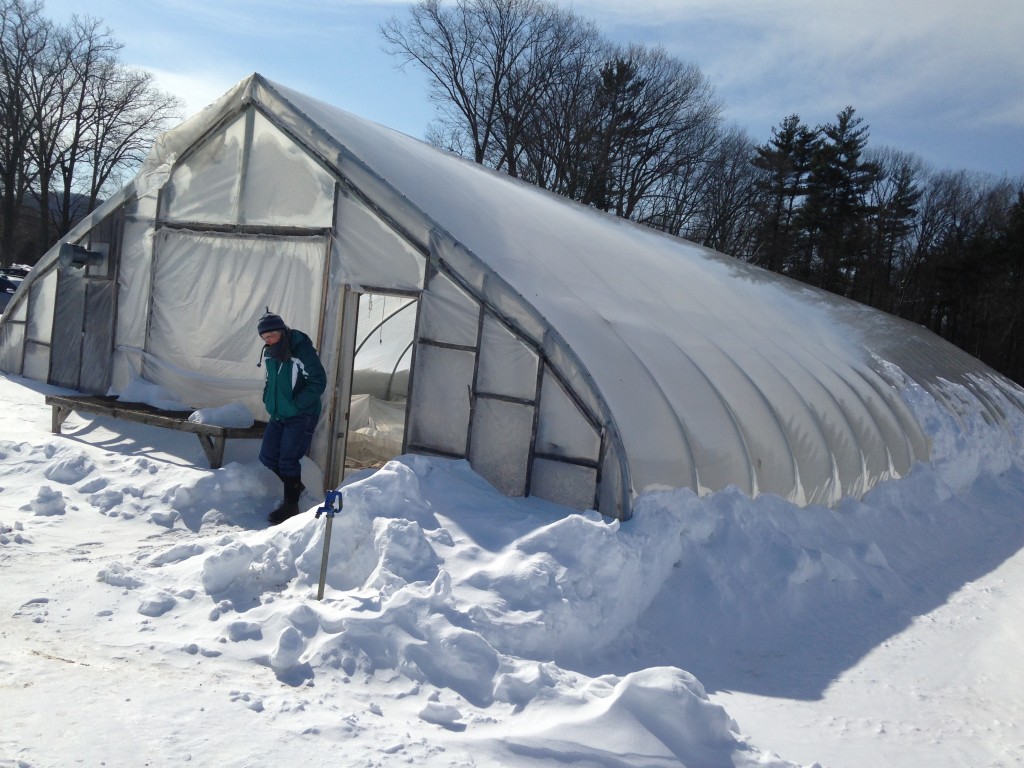 As a farmer during this time of year, I often get the question “what do you do all winter?” I usually smile, shrug and reply, “I go down to a forty-hour week.” Admittedly this response has not led to very many follow-up questions over the years so I thought that I would finally sit down and let you in on the mysterious life of a farmer in winter.
As a farmer during this time of year, I often get the question “what do you do all winter?” I usually smile, shrug and reply, “I go down to a forty-hour week.” Admittedly this response has not led to very many follow-up questions over the years so I thought that I would finally sit down and let you in on the mysterious life of a farmer in winter.
Just like everyone else this year, Jason, Pete and I are spending a lot of time moving snow. The storms seem to come every three days or so with a fresh new coating of multiple inches of snow on top of the several feet already on the ground. Aside from clearing paths to all the barns and animals (a big thank you to Facilities for their help with this), we need to keep the farm greenhouses clear of snow. If the snow piles up along the sides, the weight of it can cause the steel structure to bend and collapse. Not a pretty sight. If this were to occur the greenhouse would most likely be a total loss. Plowing down along the greenhouse without ripping into the plastic wall takes patience and skill, and heavy machinery. Not to worry, we are getting a lot of practice this year.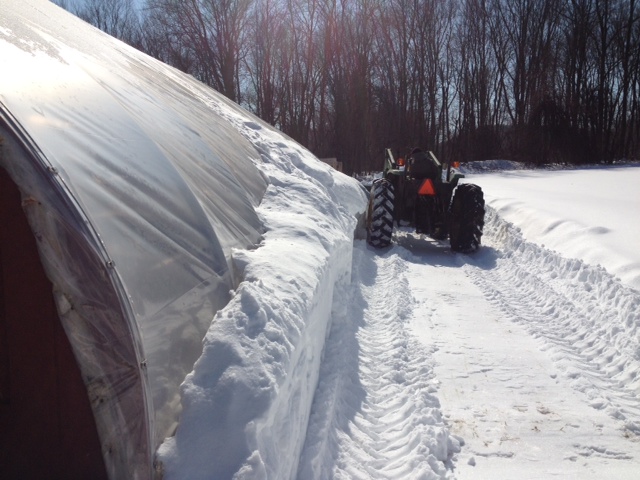
When not trying to find our greenhouses under all this snow, Assistant Vegetable grower Jason and our hardy crew of work-study students are busy tending the winter salad crops that are grown in these unheated structures. Yes, unheated. How is that possible? We choose crops that can withstand freezing temperatures, and protect them with two layers of plastic on the roof and an additional spun-poly blanket inside the house. We grow mostly spinach and a selection of greens in the mustard family such as arugula, kale, and tatsoi. I say, “grow” but these plants haven’t done a whole lot of growing lately. This system relies on sunlight to warm the inside of the greenhouse and we have had precious little of that over the last few months. The very cold temperatures at night are not helping either. The days are getting longer, however, and the sun is getting stronger so it won’t be long before we can begin to harvest. At that time, these incredibly tasty salad mixes will be sent to the dining hall and offered for sale in the Farm Marketplace cooler on the Bridge.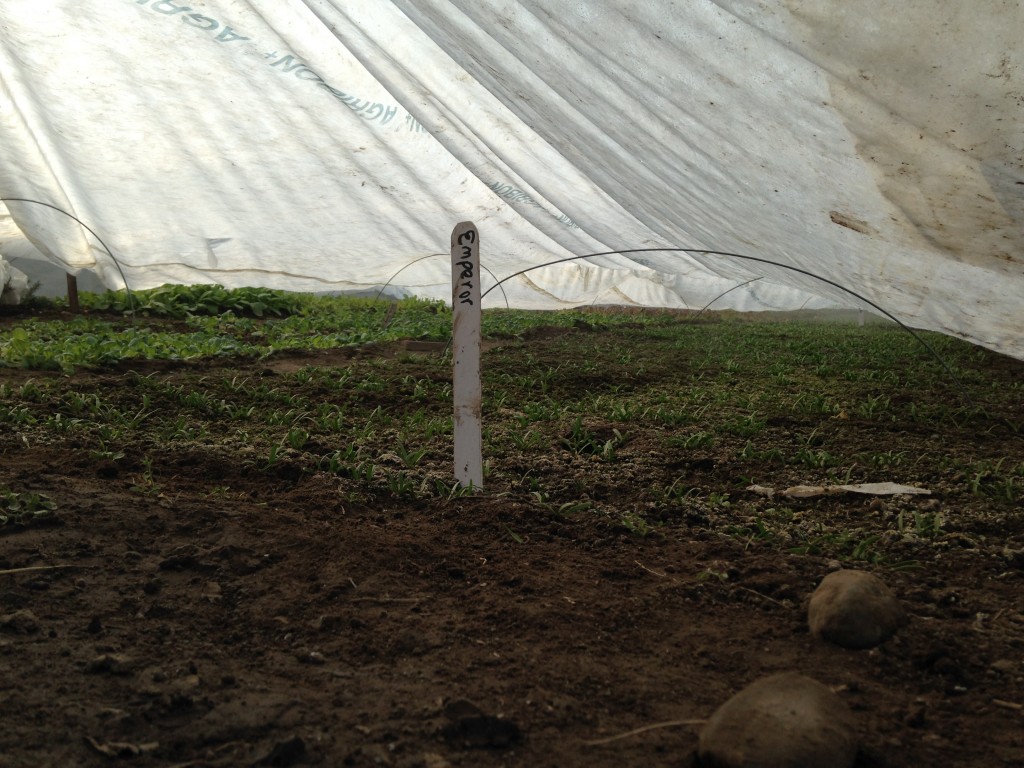
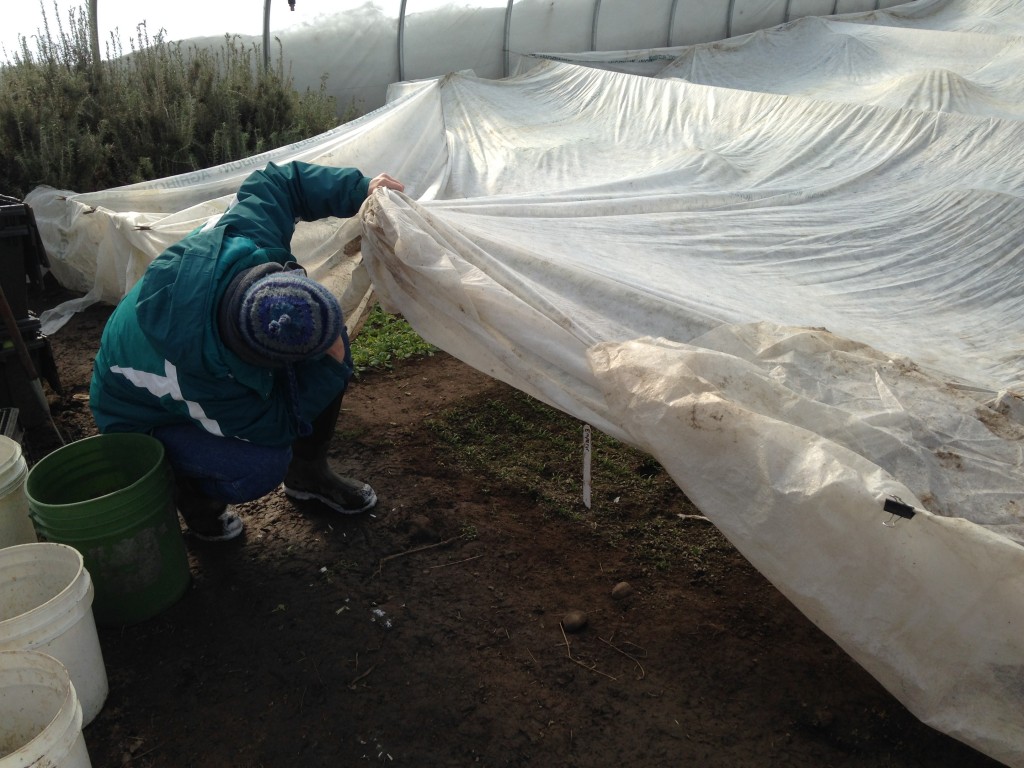
Jason and his crew are also busy tending to the thousands of pounds of vegetables that we have stored in the root cellar. Carrots, beets, radishes and other crops were harvested in November and tucked away for all of us to enjoy throughout the winter. Getting them out and washed in this weather has been a challenge but we are delivering more than 350 pounds of roots and cabbage to the dining hall each week. These veggies will also be available for sale on the Bridge soon.
I suspect that most everyone’s image of a farmer’s life in winter features long hours spent in front of a fire with a stack of seed catalogs and a cup of hot cocoa. While that is not exactly what goes on at the Hampshire farm, Jason and I do spend a lot of time reviewing the success and failures of the last season and planning for the next. I often tell young farmers, “I do all my thinking in January. I don’t have time to think in June.” To that end, we review each of our 40-plus crops one by one and create seeding schedules, field, fertilizer and harvest plans. We then have the enviable task of sifting through the glossy color pages of the seed catalogs (or, as my friend calls it, “veggie porn”) looking for new crops or varieties to try and putting together a seed order for the year. By the end of the process, I know that on June 8th, Jason or I will hop on our new electric tractor and seed 3000 row feet of Bolero carrots in field section W4. Or so I hope. In farming, as in life, things rarely go according to plan especially when the weather is involved. But right now, in February, in my mind, we have a perfect season. There is no drought or flood, there are no woodchucks eating the beans and there is no blight on the tomatoes. I only have a box of seeds that along with some sun, some rain and a whole lot of work, will be feeding many of you come September.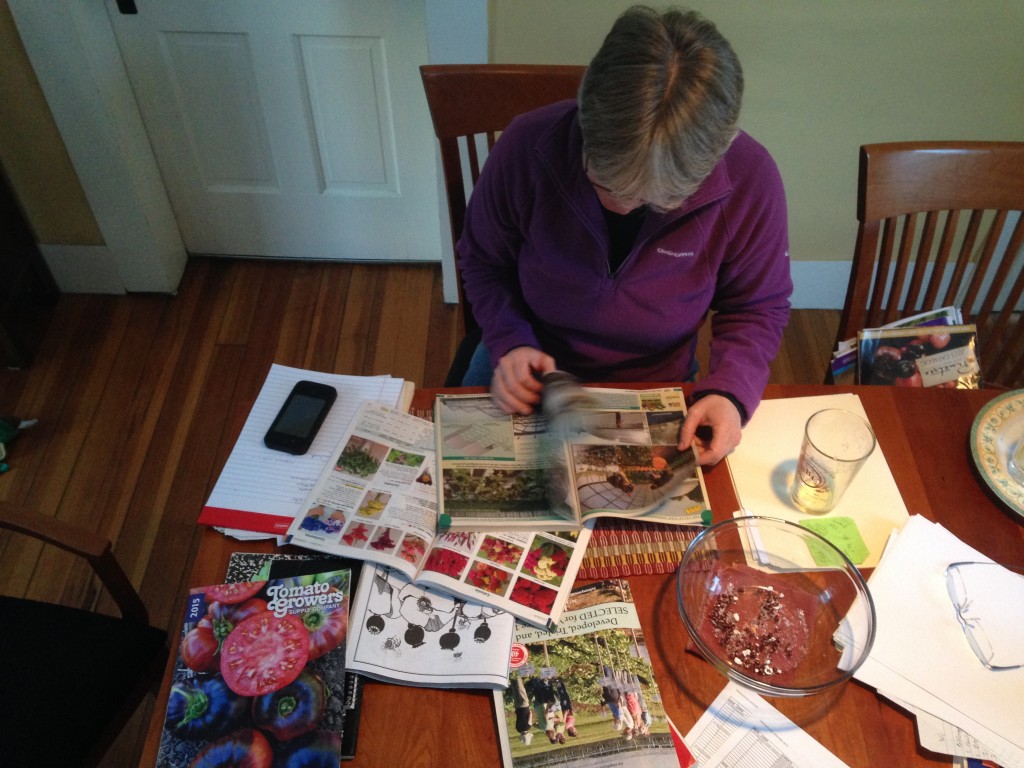
Wait! Back up, electric tractor you say? Yes, by carrot planting time we expect to have not one but two electric powered Allis Chalmers G tractors on the farm. We are trading in our old formally-vegetable-oil-powered tractor for an electric one and thanks to a NSF grant we are converting another to electric as well. In addition to projects like these, Jason and I spend a fair amount of time cleaning and repairing equipment and catching up on all the projects that fall by the wayside during the busy growing season.
So there you have it. Farmers do have a lot of work to do in the winter. We don’t spend all of our time on some tropical beach somewhere. (Well…maybe just a few weeks here and there.) And sugaring time is not far off.
